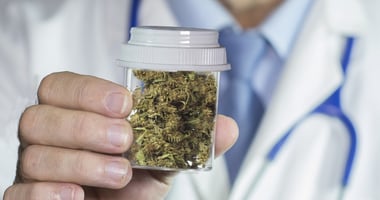For psychiatrists treating adolescents who smoke marijuana, a new study provides convincing data...
Medical, Recreational Marijuana Legalization Associated With Higher Rates of Youth Suicide, Study Shows

Female youth aged 12 to 24 and youth of both sexes aged 14 to 16 living in states with legalized medical marijuana or recreational marijuana between 2000 and 2019 had higher rates of death by suicide than youth in states with no such laws, according to a report in the Journal of the American Academy of Child and Adolescent Psychiatry.
These effects remained significant after controlling for a wide array of possible confounding variables and employing statistical analysis to examine the effect of other state-level variables that might influence suicide rates. The findings translate to nearly 5,000 excess suicide deaths of female adolescents and young adults related to medical marijuana and recreational marijuana legalization in the study period, noted lead author Christopher J. Hammond, M.D., Ph.D., of Johns Hopkins University School of Medicine, and colleagues.
“Given dramatic shifts in cannabis policy over the past 20 years, it is important for clinicians and policymakers to understand potential downstream public health outcomes related to changing cannabis policy,” they wrote.
The researchers analyzed data on suicide rates using the 2000-2019 National Vital Statistics System Multiple Cause of Death files for age groups 12-13, 14-16, 17-19, 20-22, and 23-25. Depending on the year of death and state (since many states changed their cannabis laws during this time), the decedents were characterized as having lived in a state with medical marijuana legalization (MML), recreational marijuana legalization (RML), or no marijuana legalization (no ML). By 2019, 23 states had MML, and 10 states and D.C. had RML; all remaining states did not enact marijuana legalization.
The final analysis included 113,512 suicide deaths, corresponding to an unadjusted annual rate of 10.93 per 100,000 people. Hammond and colleagues found that across all ages, female youth who lived in MML and RML states had a 10% and 16% greater risk for suicide, respectively, compared with those who lived in no ML states. There was no elevated suicide risk in male youth overall in RML and MML states, and in fact the analysis suggested a 3% decreased risk of suicide for male youth in effective MML states compared with no ML states.
When examining individual age brackets, the researchers found that male youth aged 14 to 16 living in RML states had a 15% higher risk of suicide compared with male youth in MML states. When data on both sexes were combined, youth aged 14 to 16 in RML states had an increased suicide risk ranging from 9% to 14% compared with same-age youth living in states with MML or no marijuana legalization, respectively.
The authors emphasized that the study is limited in its ability to explain the mechanism for increased youth suicide and marijuana legalization.
“Mechanisms through which MML and RML are related to suicide risk in female youth and younger-aged adolescents warrant further study and should be used to reform cannabis legislation with the goal of mitigating risk for vulnerable subgroups,” they wrote. “Over the past two decades, U.S. cannabis policy has been primarily profit driven. Shift to a public health-centric approach is needed.”
For related information see the Psychiatric News article “Marijuana: Dangerous for Developing Brain”.
(Image: iStock/GoodLifeStudio)
Psychiatric News Invites Applications for
Medical Editor-in-Chief
APA members who have administrative experience, are passionate about disseminating news in the field of psychiatry, and are knowledgeable about print and digital communications are invited to apply. Watch a short video in which the current editor-in-chief discusses this influential and key position. The deadline for applications, which should include a vision statement and a curriculum vitae, is July 19, 2023.





